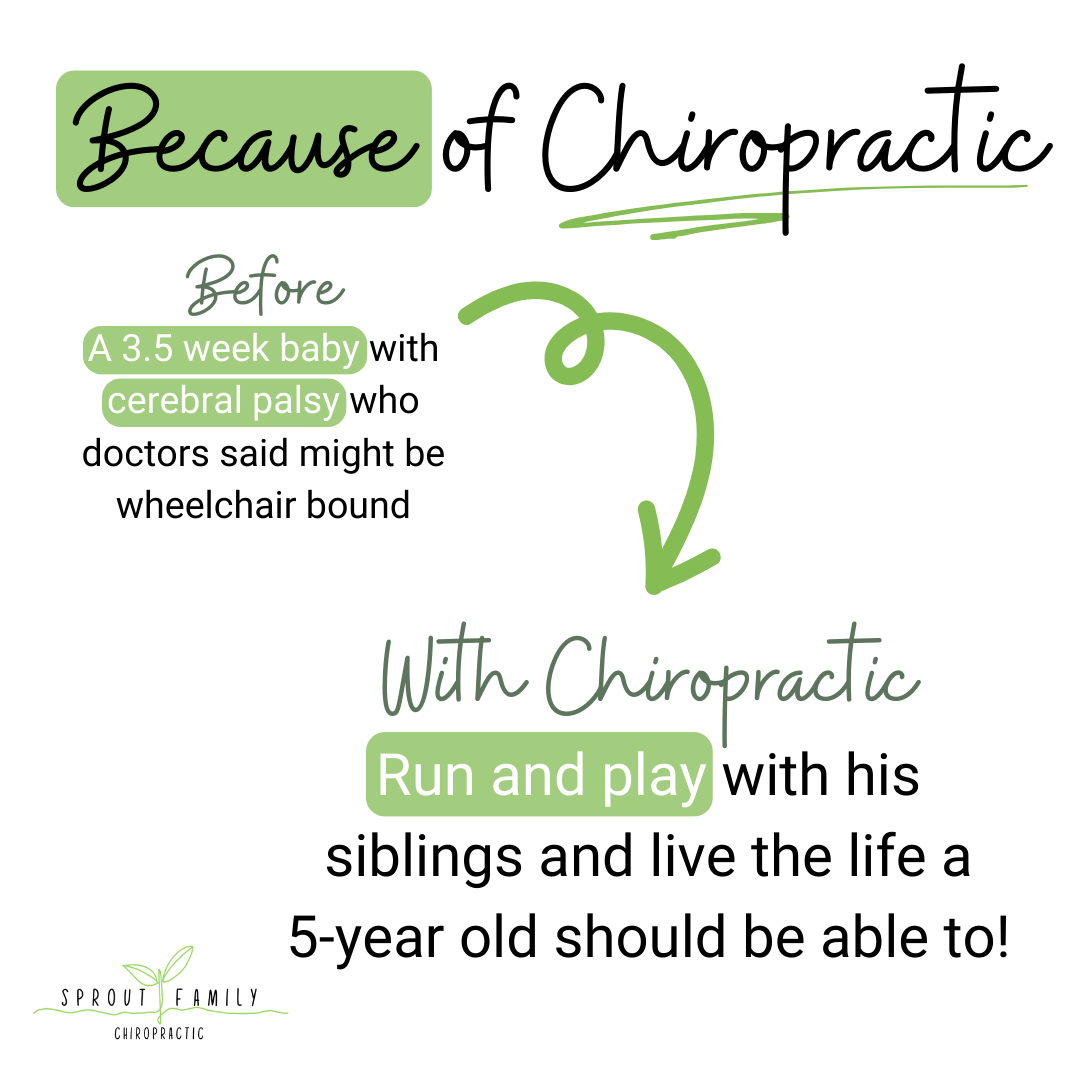Overcoming Cerebral Palsy
Imagine you just had a baby and you are told he might be wheelchair bound for the rest of his life and might not be able to talk or feed himself. This was the case for a 3.5 week old baby because his brain didn’t get enough oxygen. His hospital discharge records reported this was due to “respiratory failure, persistent pulmonary hypertension of the newborn, shock and hypoxic-ischemic encephalopathy.”
In short, this little boy had cerebral palsy.
UNDERSTANDING CEREBRAL PALSY (CP)
The exact cause of cerebral palsy (CP) can be extremely difficult to determine and CP encompasses a group of syndromes or symptoms that result in brain damage or neurological dysfunction due to a lack of oxygen during birth, prenatal or postnatal period. Birth trauma is a factor that should be considered as physical stress and tension in the upper brainstem often plays a role in neurological dysfunction.
The severity of symptoms of cerebral palsy differs child to child, person to person, but in most cases it produces permanent neurological damage that results in altered motor function and coordination. This is usually recognized early on by parents when children with CP are delayed in hitting their motor developmental milestones at an “age appropriate range”.
TYPES OF CEREBRAL PALSY
There are 4 different types of cerebral palsy:
Spastic cerebral palsy – the muscles are stiff and tight (especially when trying to move them quickly), making it difficult to move and reducing the range of movement that's possible
Dyskinetic cerebral palsy – the muscles switch between stiffness and floppiness, causing random, uncontrolled body movements or spasms
Ataxic cerebral palsy – when a person has balance and co-ordination problems, resulting in shaky or clumsy movements and sometimes tremors
Mixed cerebral palsy – when a person has symptoms of more than one type of cerebral palsy
SIGNS AND SYMPTOMS OF CEREBRAL PALSY
Common motor-related symptoms of cerebral palsy include:
delays in reaching development milestones – for example, not sitting by 8 months or not walking by 18 months
seeming too stiff or too floppy (hypotonia)
weak arms or legs
fidgety, jerky or clumsy movements
random, uncontrolled movements, muscle spasms
walking on tiptoes
Other symptoms related to cerebral palsy include:
feeding, drooling and swallowing problems
problems with speaking and communication
seizures or fits (epilepsy)
difficulty falling asleep and/or staying asleep
an abnormally curved spine (scoliosis)
hips that pop out (dislocate) easily
difficulty controlling the bladder (urinary incontinence)
a learning disability – about half of children with cerebral palsy have a learning disability
While there is no cure of cerebral palsy, early care and support can help those with cerebral palsy adapt and overcome developmental disabilities. Many families utilize a whole team of providers like neurologically-focused chiropractors, physical therapists, occupational therapists, speech therapists, ABM practitioners as these parents did to support their baby.
OVERCOMING CEREBRAL PALSY
Under consistent, long-term chiropractic care as well as being supported by OTs, PTs and speech therapists this little boy was able to finally crawl at 12 months, walk at 16 months and talk by 24 months!
And by age five, this little boy had minor visual signs of cerebral palsy (i.e. with regards to postural and altered gait), he was able to speak with minor impairment. He did not need a wheelchair and was able to run and play, just like his siblings!
Is your child struggling with this or something else? Sprout Family Chiropractic located in Kearny Mesa, San Diego is here to help. 🌱
Send us a message through our Contact Us page or give us a call at (619) 786-4886 for a free 5 minute phone consultation. 💚
Ready to get to the root cause? Click the button below to get started!
Sources:
Chiropractic Care & Long Term Follow Up of an Infant with Cerebral Palsy: A Case Report & Review of the Literature. Drew Rubin, DC & Aleisha Taylor, DC. Journal of Pediatric, Maternal & Family Health, Chiropractic ~ Volume, 2023.


